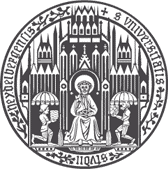
Discourse Representation Theory
Module Description
| Course | Module Abbreviation | Credit Points |
|---|---|---|
| BA-2010 | AS-CL, AS-FL | 8 LP |
| BA-2010[100%|75%] | CS-CL | 6 LP |
| BA-2010[50%] | BS-CL | 6 LP |
| BA-2010[25%] | BS-FL | 4 LP |
| Master | SS-SC-FAL | 8 LP |
| Lecturer | Kurt Eberle |
| Module Type | |
| Language | Englisch |
| First Session | 15.10.2025 |
| Time and Place | Mittwoch, 13:15 - 14:45, INF 346 / SR10 |
| Commitment-Frist | tba. |
Participants
All advanced CL Bachelor students and all CL master students. Students from MSc Data and Computer Science or MSc Scientific Computing with Field of Application Computational Linguistics are welcome after getting permission from the lecturer. MSc Scientific Computing students can only take the course as HS for 8 LP. If the seminar should be oversubscribed, CL students will have priority.Prerequisites for Participation
- Introduction to Computational Linguistics
- Logical Foundations
- Formal Semantics
Assessment
- Paper presentation (4/2 LP)
- Written Exam (4 LP)
Content
With its 'discourse representation structures' (DRSs), 'discourse representation theory' (DRT) provides an expressive formal language that can be used to capture the content of discourses in logical detail, taking into account in particular the relationships between the individual sentences of an utterance or text.
In contrast to the currently prevailing representation of documents using neural networks (NN) and LLMs, the DRT approach follows the previously classical view that the semantic representation and meaning of a text can be calculated according to fixed rules based on the syntactic structure and order of the sentences. Although less interesting for derivation practice in the context of modern AI, DRT is of great epistemological importance because it deals with content-related phenomena that cannot be handled (or cannot be handled well) in other common types of representation.Key texts are used to highlight core topics in the development of the theory, such as the representation and meaning of anaphorically used pronouns and definite descriptions, events and states and their relationships to each other in texts, the representation and meaning of quantified statements, presuppositions and, in connection with this, the attitudes of the persons involved in the discourse (the respective 'speaker' and 'hearer') and the contribution of attitudinal states to the interpretation of events and information in discourse, whereby concepts such as internal and external 'anchors' and postulated ‘shared knowledge’ play an important role. Other important points are representations of nominalizations and inferences from DRSs.
Literature
Further reading will be announced during the course of the seminar


